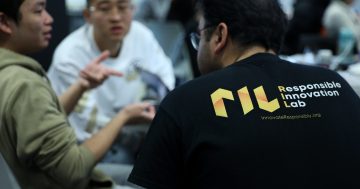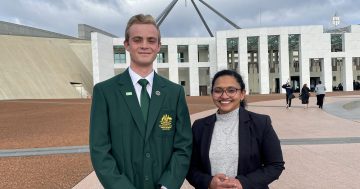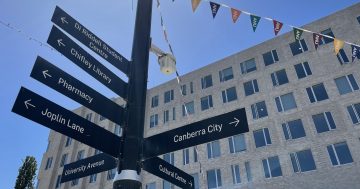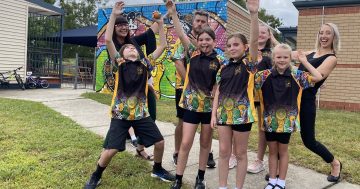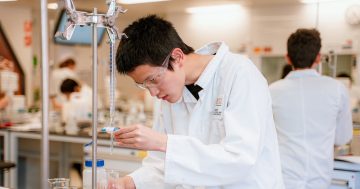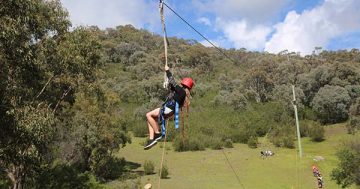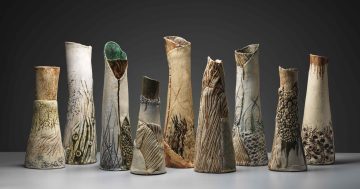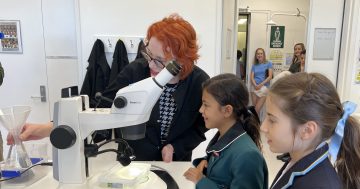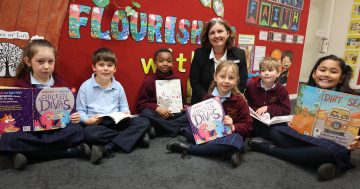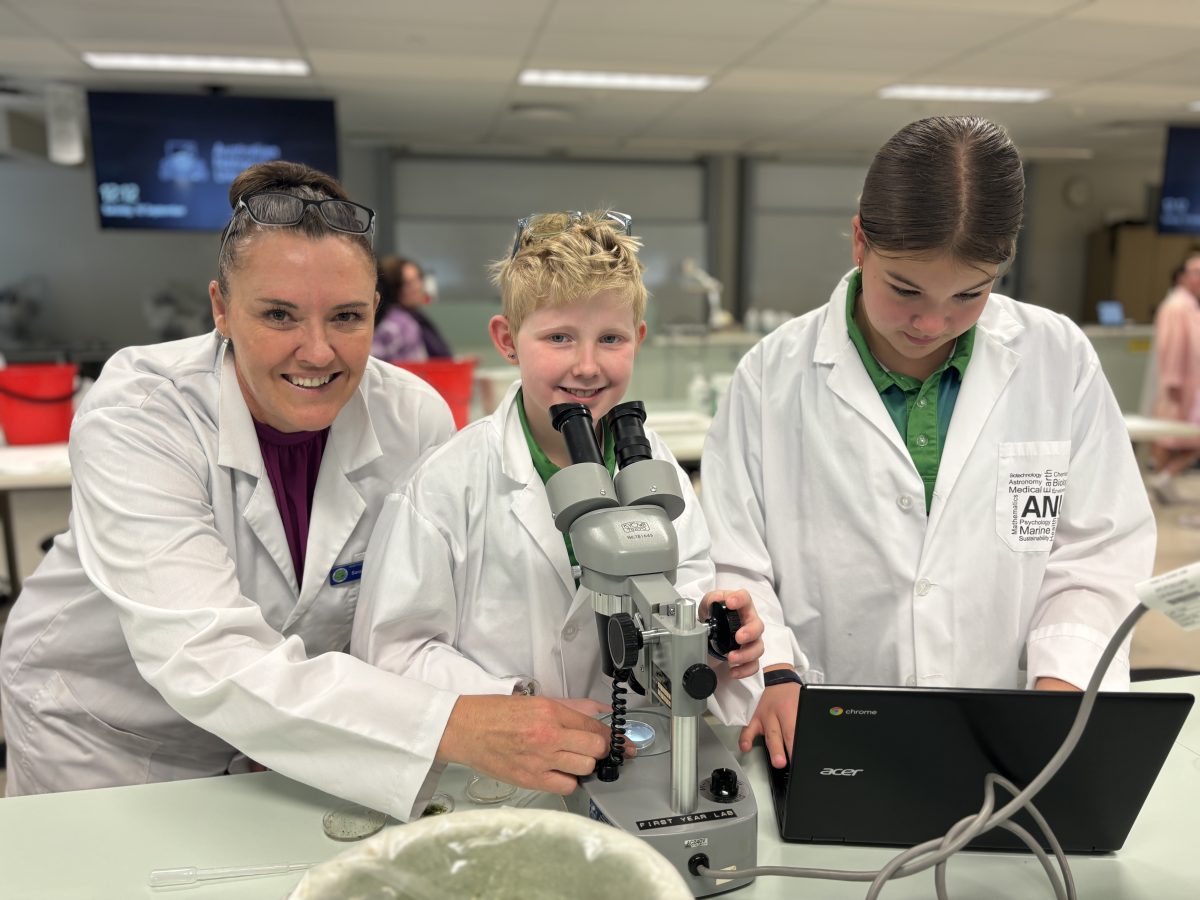
Sarah Fletcher with Bonython students. Photo: Supplied.
“I got one!” a Year 6 student cried, raising a pipette from a container of murky Lake Tuggeranong water on an ANU lab bench.
Transferring the specimen to a Petri dish, she and her teammates rushed to a microscope. By comparing its structure and features to images in a pond microlife guide, Clara, Eloise and Bianca were able to identify it.
“It’s a planarian, a flatworm!”
They’d been fascinated to learn about flatworms – which can live indefinitely and reproduce by tearing themselves in half – on their arrival at the two-day ANU Primary Schools Enrichment Event, during a lecture from Professor Maja Adamska, Associate Director (Education) and Head, Biology Teaching and Learning Centre in the ANU Research School of Biology.
Professor Adamska was thrilled the students had found and identified a flatworm.
“I’m not sure what species it is, but it’s a freshwater planarian; it could be a Dugesia or Schmidtea,” she told them.
“That’s cool!” one responded. “I didn’t know they existed, but now I’m going to go research about flatworms. They’re really cool!”
“Yeah, exactly!” another said. “Now, every time I go to a lake, I’m going to be like, do you think there’s flatworms in there?”
Professor Adamska grinned.
“This is why I became a university lecturer!” she said.
“Feeling that you are actually passing this enthusiasm on to the next generation.”
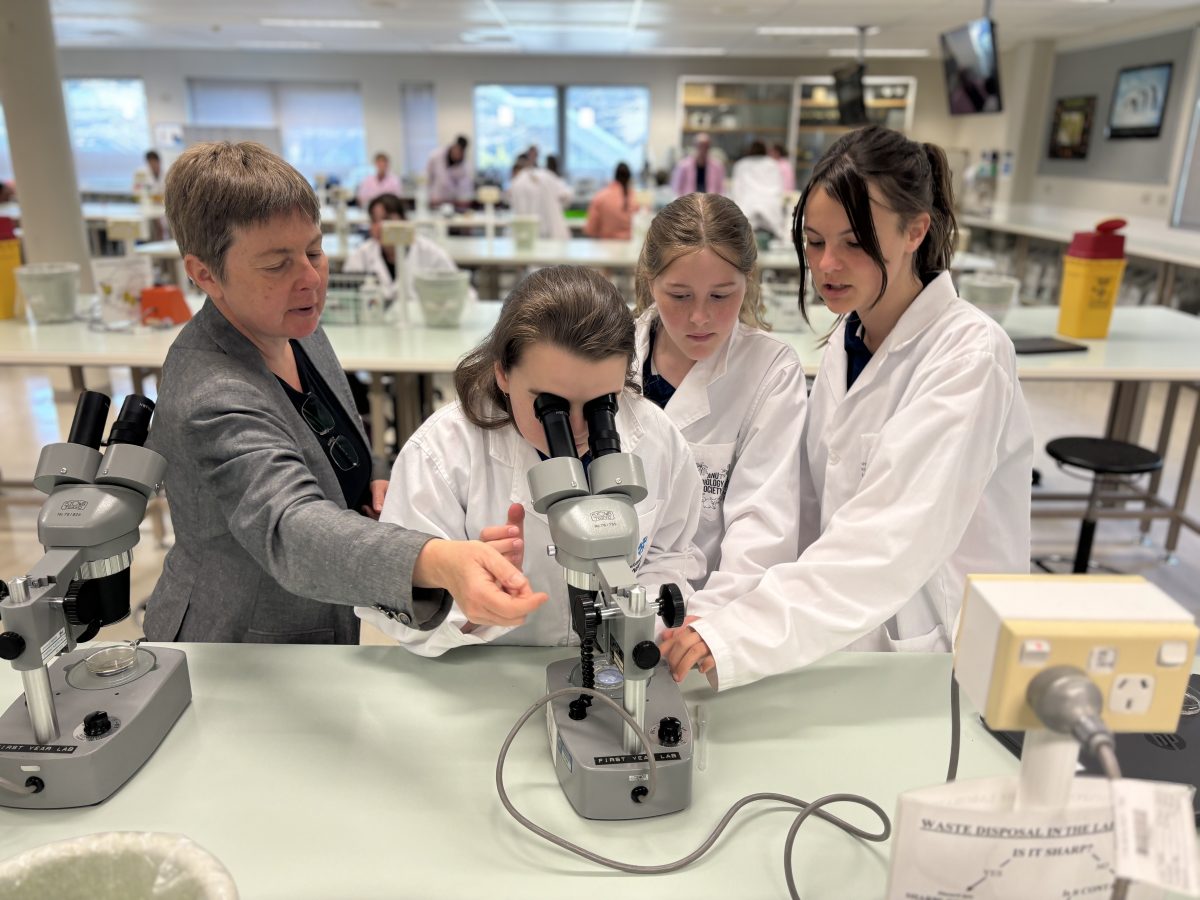
Professor Maja Adamska shows students how to use a microscope. Photo: Supplied.
Elsewhere in the lab, student groups were using lemon, celery, beetroot, carrots, salt and water to produce dyes in different hues, then testing them on swatches of cotton, polyester and a blend.
Others were testing the impact of water density (adjusted by salt level) and temperature on water movement by adding food colourings to each solution type and then using a syringe to pump them into a tank, forming a rainbow. This helped students understand ANU earth sciences research into ocean current patterns.
Organised annually by Sarah Fletcher, 2020 Prime Minister’s Prize for Excellence in Science Teaching in Primary Schools recipient and a STEM specialist teacher at Bonython Primary School, the enrichment program brings students from ACT public schools in Tuggeranong (Bonython, Monash, Taylor and Calwell Primary Schools and Namadgi School this year, with secondary students from the latter joining as mentors) to the ANU for an open day and a day in the lab, after which students present findings to fellow participants, and later, back at school.
It provides insights into the joys of science before students become set in their views about their future pathways. It enables them to better understand the educational steps required to follow a career in science.
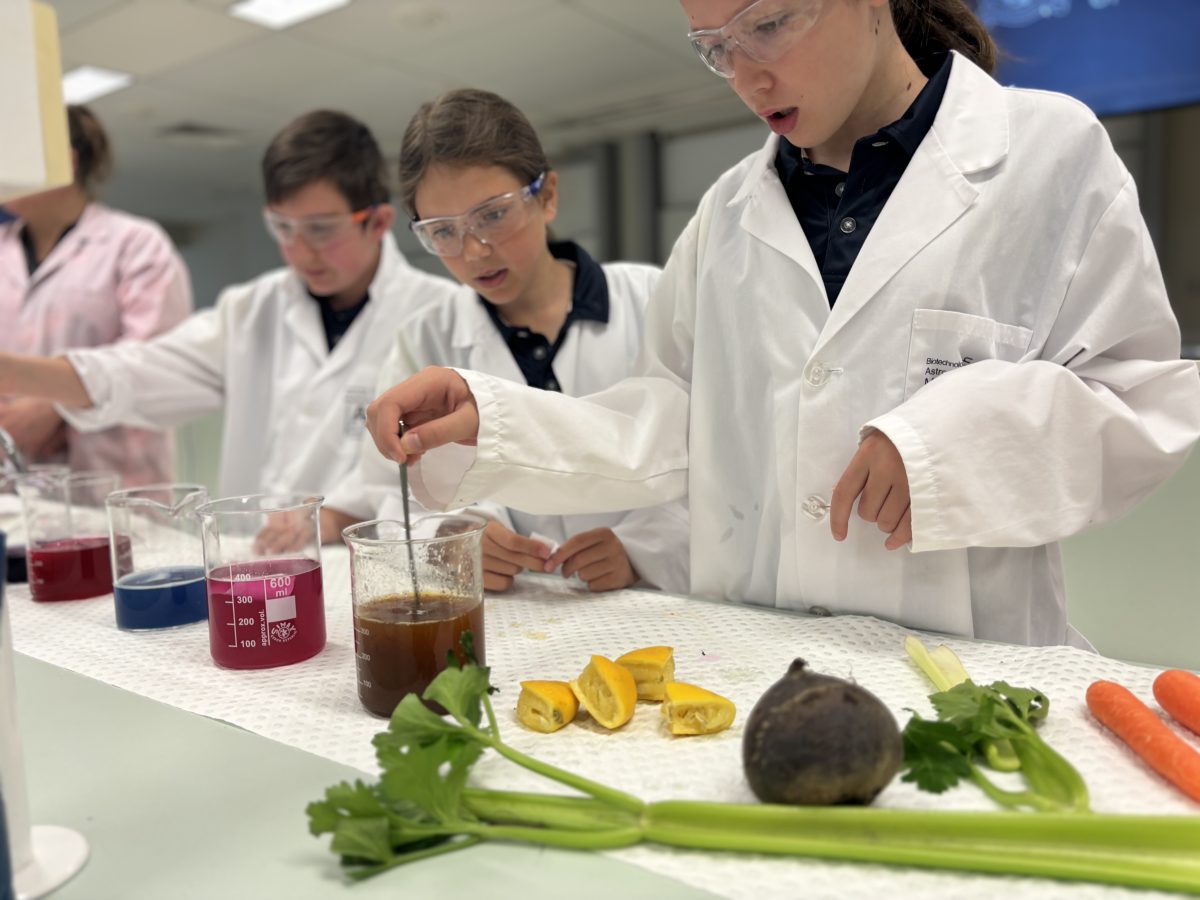
Simple experiments can inspire the next generation of scientists. Photo: Supplied.
During her undergraduate science studies at ANU, Sarah was selected to undertake a special topics unit of work in a lab, under academic supervision, on evolutionary genetics with a sustainability focus. She would have considered a research career had more permanent full-time opportunities for women in science been available at the time.
“Back then, it wasn’t so easy for females because it was contract work, so you had to choose: Mum or scientist?” Sarah said.
She opted to study teaching at the University of Canberra, something she imagines would’ve happened eventually in any case.
“Honestly, the fun is with the kids,” she said. “I get to see little minds explode every day!”
Professor Adamska applauds Sarah’s focus with the event on younger students who may not otherwise engage with science at this level.
“She doesn’t just bring her own school … having multiple primary schools represented gives a much bigger impact. We have six kids from each school, and that’s great, but it’s going to spread. Those kids will talk to other kids.”
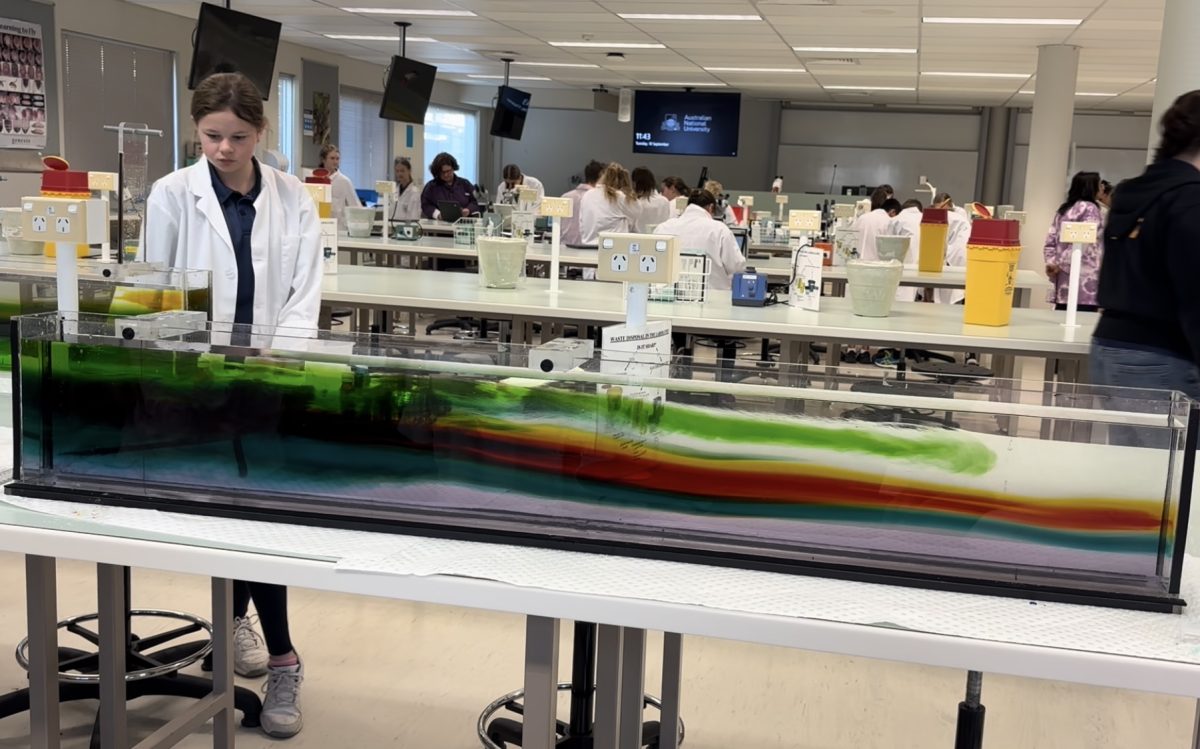
Students tested the impact of water density (adjusted by salt level) and temperature on water movement by adding food colourings to each solution type and then using a syringe to pump them into a tank, forming a rainbow. Photo: Supplied.
Including the secondary student mentors and exposing teachers to the activities created two additional cohorts of “ambassadors” for this sort of science learning.
“You always wonder, are there a lot of kids we’re not getting in simply because they don’t know it’s interesting?” Professor Adamska said.
“University is too late. By the time they get to university, they have already decided.”
She was impressed by the rigour of the students’ questions during the event.
“There is so much talent out there.”
The students we met said they did feel inspired to consider further science study, though one felt she wasn’t very good at science in general, having earned a C last year.
“That means you are at standard, and you can always get better,” Professor Adamska pointed out.
“I find people who are not good at science are actually those who don’t believe they are good at science, or they are simply not interested.”
On arrival at the ANU, one of the older students looked around at the many university buildings and asked Sarah which one housed science. It hadn’t crossed his mind that there would be more than a dozen different science buildings on the Acton campus alone, with others at Mount Stromlo, Siding Spring Observatory and the North Australian Research Unit.
“That’s why we need to bring them here,” Sarah said. “So we can show them what’s possible beyond science at school.”












